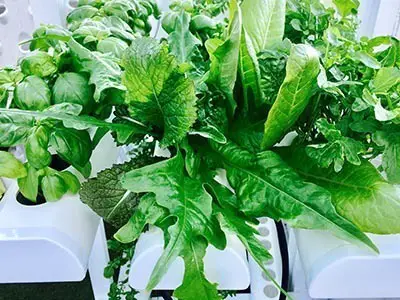Hydroponic systems involve the growing of plants solely with water, mineral elements, and an inert medium. As the name implies, hydroponics does not use soil to grow healthy plants, and it is named after the words “hydro” and “ponos.” Doesn’t that sound futuristic and high-tech? That’s not the case.
History of Hydroponics
Early examples of hydroponics can be found in the Hanging Gardens of Babylon and the Floating Gardens of China. People have used these techniques for thousands of years. Even though the basic theory behind a hydro setup remains the same, modern technology has allowed us to grow fresh vegetables faster, stronger, and healthier.
Modern Hydroponics
 The earliest modern reference to a form of hydroponics was made by William F. Gericke (last 100 years). He popularized the idea of growing plants in nutrient-rich water instead of soil while working at the University of California, Berkeley. Gericke’s colleagues, as well as the general public, doubted this claim.
The earliest modern reference to a form of hydroponics was made by William F. Gericke (last 100 years). He popularized the idea of growing plants in nutrient-rich water instead of soil while working at the University of California, Berkeley. Gericke’s colleagues, as well as the general public, doubted this claim.
Using only fresh water and mineral nutrients, Gericke grew 25-foot high tomato vines. Hydroponics is the name he gave to this vertical farming method. As a result of Gericke’s tomatoes experiment, further research into the field was conducted. Scientists from the University of California conducted further research on cultivating plants without soil, finding several benefits.
Benefits of Hydroponic Technology
A major advantage of hydroponics systems over soil growing is their water conservation. Plant growth in soil requires a lot of experience for the grower to know how much water to give them. The roots cannot get enough oxygen if there is too much water. The plant can dry out and die if there is not enough water. Hydroponic principles offer three solutions to this problem.
Oxygenated Hydroponics Nutrient Solution
It is possible to continuously oxygenate the water reservoir using an air pump, ensuring that the extensive root systems of leafy greens receive the required level of oxygen. Further, a lack of soil surrounding the plant’s roots solves watering, causing the plant roots not to absorb oxygen. Hydroponic nutrient solutions can be purchased from gardening centers and nurseries and comprise a blend of nutrients such as nitrogen, potassium, calcium, magnesium, and others.
Less Water Usage
The recirculation of a water solution in a hydroponic farm reduces the water used compared to soil farming. Generally, an aquarium pump moves water onto a plant bed or grow tray. Traditional farming involves pouring water over the ground and letting it soak into the soil. Only a small amount of water is used by the plant. It is possible to recycle unused water back into the reservoir with hydroponics technology, ready to be used again in the future. This is a huge benefit in dry, arid regions.
Growth Control
Last but not least, hydroponics allows a grower to implement environmental controls. These enable plants to grow for better crop yield. The environment is often portable and elevated off the ground, making it easier to combat pests and diseases. Bugs will have a hard time reaching your hydroponic plants this way. Diseases associated with soil are eliminated with a hydroponic setup. Furthermore, you can precisely control how much nutrition is provided to your crops of vegetables, reducing plant food costs. Compared to traditional agriculture, this method saves time and produces healthier, lusher plants.
The Future of Farming
Hydroponic growing seems to have no downsides with all of these benefits! Not entirely accurate. In hydroponics farms, errors can be costly and ruin the entire crop since soil acts as a buffer for growing errors. Also, high levels of humidity can encourage the growth of fungi and mildew, resulting in disastrous results.
Hydroponic farming has vast advantages over conventional farming, so we believe these are small costs to pay. Across the globe, we are witnessing a rise in commercial hydroponic greenhouses in producing abundant crops.
With fresh food and water supply being such hot topics globally, we see the future of hydroponic methods as one of the best ways to solve these problems. A new era in agriculture has begun!

